With Answer Set Programming you can efficiently solve NP problems declaratively.
Given an instance file instance.lp to describe your graph:
edge(0,1,5).
edge(1,2,3).
edge(2,5,3).
edge(5,6,4).
edge(1,3,4).
edge(3,4,5).
edge(4,6,6).
source(0).
sink(6).
and an encoding.lp that describes your problem:
%% chose a subset of the edges to remove
{removed(X,Y,W) : edge(X,Y,W)}.
%% source is reachable
reach(X) :- source(X).
%% going through edges is reachable if the edge ws not removed
reach(Y) :- reach(X), edge(X,Y,W), not removed(X,Y,W).
%% handling bidirectional edges
reach(Y) :- reach(X), edge(Y,X,W), not removed(Y,X,W).
%% it is not allowed to reach the sink
:- sink(X), reach(X).
%% minimize the number of removed edges weighted by W
#minimize {W,X,Y : removed(X,Y,W)}.
%% show only removed edges
#show removed/3.
The call clingo encoding.lp instance.lp (available at https://potassco.org/ ) produces the output:
clingo version 5.5.1
Reading from encoding.lp ...
Solving...
Answer: 1
removed(5,6,4) removed(4,6,6)
Optimization: 10
Answer: 2
removed(5,6,4) removed(1,3,4)
Optimization: 8
Answer: 3
removed(0,1,5)
Optimization: 5
OPTIMUM FOUND
The last answer being the optimal solution to your problem.
You can also simply copy the contents of the two files into your browser textfield to try it out here (with reduced performance).
